David Beckham, the Midas of the MLS and the American Dream
Time has shown that he went to the US because he had a plan, one that others couldn’t envisage, seeing soccer as a goldmine.
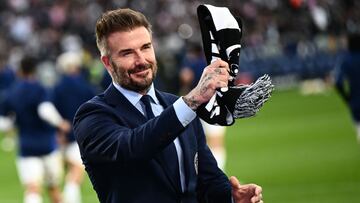
Beckham changed everything. And he endured it all. “He’s going to Hollywood because he wants to be an actor, or who knows what… it’s a shame,” said Ramón Calderón that winter of 2007, when Beckham’s number 23 packed his bags to head to the MLS. A globally insignificant league; even they acknowledged it. There, you have American football, baseball, basketball, ice hockey, and then, oh yes, that thing they call soccer. It barely generated any money and attracted even less attention. Almost no one understood Beckham’s move, and it was talked about as a “semi-retirement.” In part, it ended up being that. But that doesn’t take away from the fact that David had a plan. And time has proven him right.
The United States was a goldmine. Even if it appeared otherwise: unattractive at first glance and daunting to approach. That’s how they tend to be. They demand patience, hard work, and a focus on the medium to long term. But if you dig and persist, in the end, you’ll find gold. When Beckham set off for the United States, MLS was a league whose TV rights were valued at $8 million (only $8 million!), on a good day, barely 15,000 spectators would gather in a stadium, and the salaries were, of course, galaxies away from those in Europe. Beckham left, slashing his salary by nearly 70%: he went from earning $18 million per season at Real Madrid (gross) to the $6.5 million offered by the Galaxy.
Why would anyone do such a thing? Because of business vision. Because there was a lot of fine print in his contract. And that’s the key.
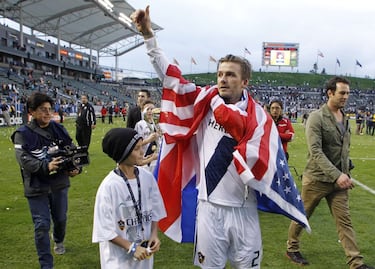
Beckham: betting, believing, and winning
There lay the secret. If you kept reading, it was stipulated that the player would receive almost 50% of the extra revenue generated by the Galaxy following his signing. ‘Come on, if this blows up, we’ll split it.’ And it did. It blew up.
Attendance at stadiums changed (up by as much as 40%), the price of TV rights skyrocketed (what had cost $8 million reached $90 million by 2014, and by 2022, $250 million). But above all, the club’s commercial sales went through the roof. So much so that the North American press reported that, thanks to ticket and shirt sales, Beckham’s annual earnings rose from the fixed $6.5 million to $10.1 million. What had been a marginal league was growing. And how.
MLS and the commercial earthquake
Beckham had a rocky start. In his first two seasons, he barely played more than 40 matches (out of 90) due to multiple injuries, and in the next two, he was loaned out to Milan.
But in 2011, he returned and... it was the Big Bang. He became a star and won the MLS twice. He lived through that growth firsthand, elevating everything. He was right at the eye of the storm. While in California, he became more popular than Uncle Sam himself, signing sponsorships with giants like Giorgio Armani, Electronic Arts, and Burger King. It’s estimated that during his years as a Galaxy player, he generated $255 million in advertising revenue. For a minority sport like soccer, that player they had signed was shaking the ground like unsteady tectonic plates.
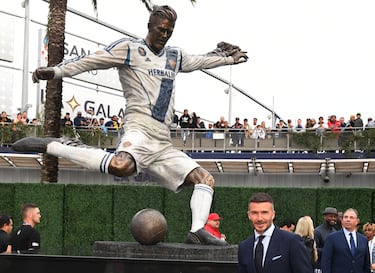
“Messi’s arrival was a big deal, he’s an amazing player… but he has a lot to do to be able to match Beckham in terms of impact,” Mani, a member of The Galaxians (LA Galaxy fan club created in 1996), told this newspaper.
Beckham was the starting point. The turning point. The game changer. The player left Real Madrid, heading to a lesser league, because he was confident that it had potential. That it was a goldmine in which it was worth getting dirty and digging. It worked. And the best was yet to come.
Buying Inter Miami for $25 million
In the same contract with the Galaxy, Beckham had a clause: he could buy a new franchise for $25 million (the cost of the permits and licenses needed to register the club). He could launch a team from scratch.
In 2014, shortly after retiring, he took the plunge and began the process of creating Inter Miami. To put the foresight of this move into perspective, what cost Beckham $25 million today would cost around $582 million. But there’s something even bigger: Becks spent $25 million and now owns an entity valued at nearly $900 million. His Inter Miami. Messi’s team.
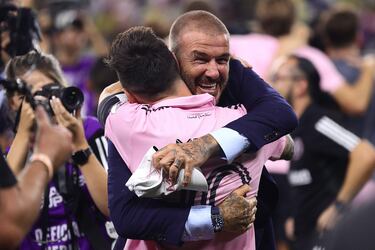
Miami confirmed it
Few believed in the United States that winter of 2007, but Beckham did. So at this point, it’s a good time to revisit Ramón Calderón’s remark: “He’s going to Hollywood because he wants to be an actor, or who knows… it’s a shame.”
Related stories
And while it’s true that Beckham eventually dabbled in a few films (‘King Arthur: Legend of the Sword’ and ‘The Man from U.N.C.L.E.’), that was never his goal. His aim was to change his surroundings... and to change an entire country’s culture around a sport. Soccer, that untapped goldmine. A league that cost $8 million to broadcast and now almost $300 million. Where launching a club required a $25 million outlay, and today it’s around $582 million.
Beckham saw an opportunity, and after ups and downs and a lot of patience, he ended up captivating a nation. The MLS boomed. And Becks fulfilled his American Dream.
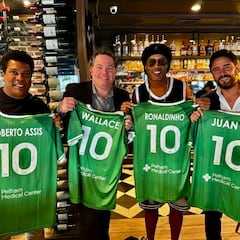

Complete your personal details to comment